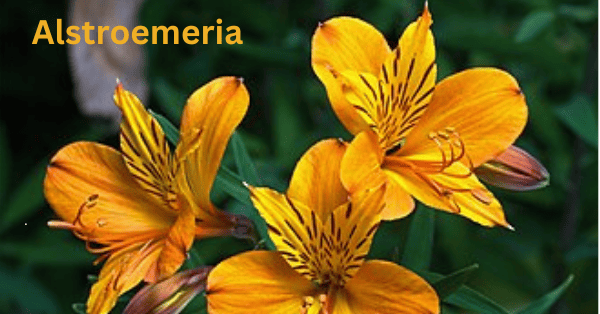Alstroemeria, often called the Peruvian Lily or Lily of the Incas, is a dazzling flower that brightens gardens and floral arrangements worldwide. Known for its vibrant colours and intricate petal patterns, this flower symbolizes lasting friendship and mutual support. This article will explore everything about it, from its origins to how to grow and care for it.
Origins and History of Alstroemeria
Alstroemeria hails from South America, primarily found in the Andes mountains of Chile and Brazil. It was named after the Swedish botanist Baron Claus von Alstroemer, who discovered the plant in the 18th century. Over the centuries, it has become a favourite flower in gardens and bouquets due to its resilience and stunning appearance.
Physical Features
The blooms come in various colours, from pastel pinks and whites to fiery oranges and purples. Its lush green foliage contrasts the vibrant flowers, making it a standout in any setting.
Symbolism of Alstroemeria
Alstroemeria carries profound symbolism. It represents friendship, loyalty, and mutual support, making it a popular gift choice. The flower’s twisting leaves symbolise life’s ups and downs, reflecting its connection to resilience and perseverance.
Popular Colors and Their Meanings
Alstroemeria comes in various colours, each holding special meanings:
Pink: Affection and admiration.
White: Purity and innocence.
Orange: Enthusiasm and warmth.
Purple: Royalty and elegance.
Yellow: Joy and positivity.
Choosing the right colour for a bouquet can add a personal touch to your message.
How Alstroemeria is Used in Floral Arrangements
Alstroemeria is a favourite in floral arrangements thanks to its vibrant colours and long vase lifts. It pairs beautifully with roses, carnations, and lilies. Its versatility and charm make it a go-to choice for many occasions, whether as a centrepiece or a casual bouquet.
Growing Alstroemeria: A Guide for Gardeners
Growing it can be a rewarding experience if you’re a gardening enthusiast. Despite its delicate appearance, it’s surprisingly easy to cultivate with the proper care.
Best Climate for Alstroemeria Cultivation
it thrives in temperate climates. It prefers full sun or partial shade and does well in regions with mild summers and cool winters. Excessive heat or frost can hinder its growth, so providing the right conditions is essential.
Soil and Fertilizer Needs
The flower grows best in well-draining, fertile soil rich in organic matter. Adding compost or a balanced fertilizer every few weeks can boost its blooming potential. Ensure the soil remains slightly acidic to neutral for optimal growth.
Watering Requirements and Tips
it requires consistent watering, but overwatering can lead to root rot. Aim to keep the soil moist but not soggy. During hot weather, increase watering frequency to prevent the plant from drying out.
Common Pests and Diseases in Alstroemeria
Like any plant, it is vulnerable to pests like aphids and spider mites. Regularly inspect the leaves and use organic sprays if needed. Common diseases include root rot and powdery mildew, which can be avoided with proper watering and spacing between plants.
Pruning and Maintenance Tips
To encourage continuous blooming, deadhead spent flowers and remove any yellowing leaves. Divide the plants every two to three years to prevent overcrowding and ensure healthy growth.
Alstroemeria in Weddings and Celebrations
Alstroemeria’s elegance and symbolism make it a staple in weddings and celebrations. It’s often used in bridal bouquets, boutonnieres, and table arrangements, adding a touch of grace and colour to special events.
Environmental Benefits of Alstroemeria
Beyond its beauty, it contributes to the environment by attracting pollinators like bees and butterflies. Its hardy nature also makes it a sustainable choice for eco-conscious gardeners.
Conclusion
Alstroemeria is more than just a pretty bloom; it’s a flower that tells a story of friendship, resilience, and joy. Its vibrant colours, low maintenance, and versatility make it a fantastic choice for gardens and floral arrangements. Whether you’re a seasoned gardener or a flower enthusiast, it is a must-have addition to your collection.
FAQs
How long does Alstroemeria bloom?
Alstroemeria blooms can last up to two weeks in a vase and several months in the garden under ideal conditions.
Can Alstroemeria grow indoors?
Alstroemeria can thrive indoors if placed near a sunny window and provided with the proper care.
Is Alstroemeria toxic to pets?
Yes, Alstroemeria contains compounds that can be toxic to cats and dogs, so it’s best to keep it out of their reach.
How do I propagate Alstroemeria?
You can propagate Alstroemeria by dividing the rhizomes in early spring or autumn.
Why are my leaves turning yellow?
Yellowing leaves may indicate overwatering, poor drainage, or nutrient deficiencies. Adjust your care routine to address these issues.



